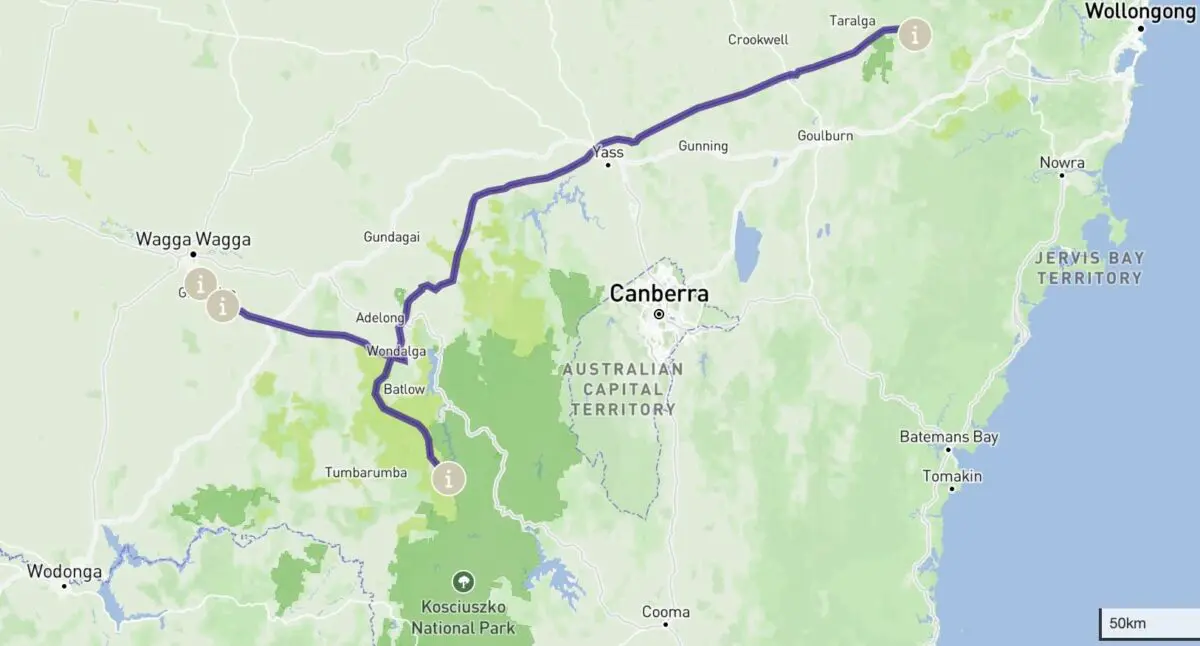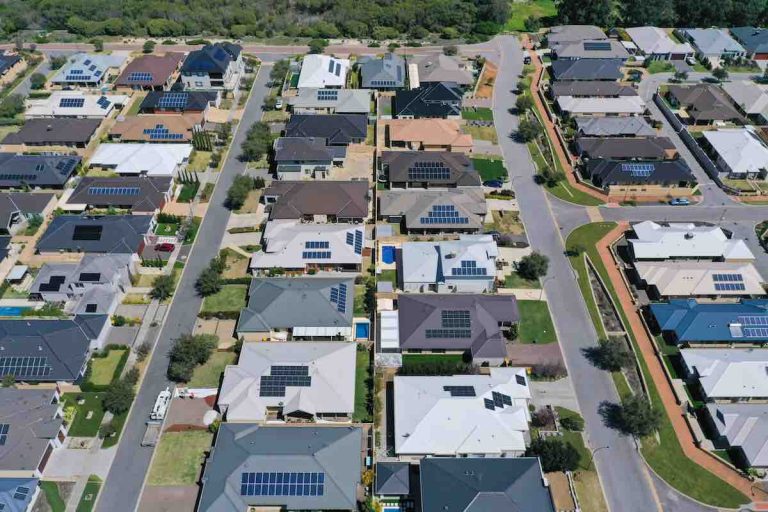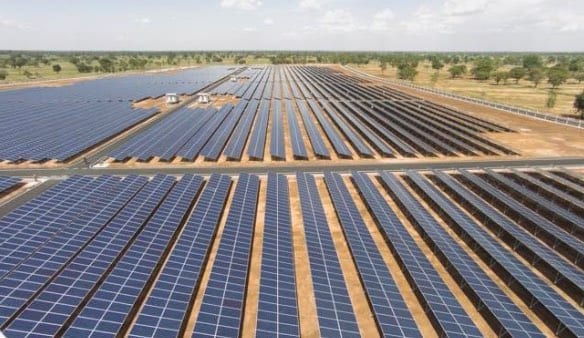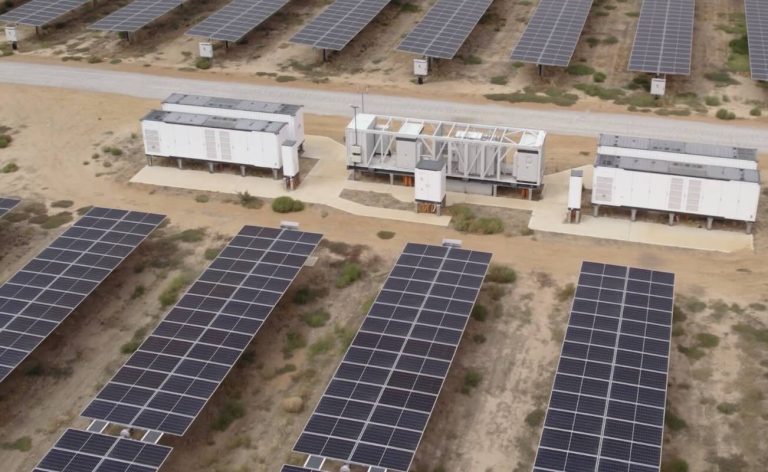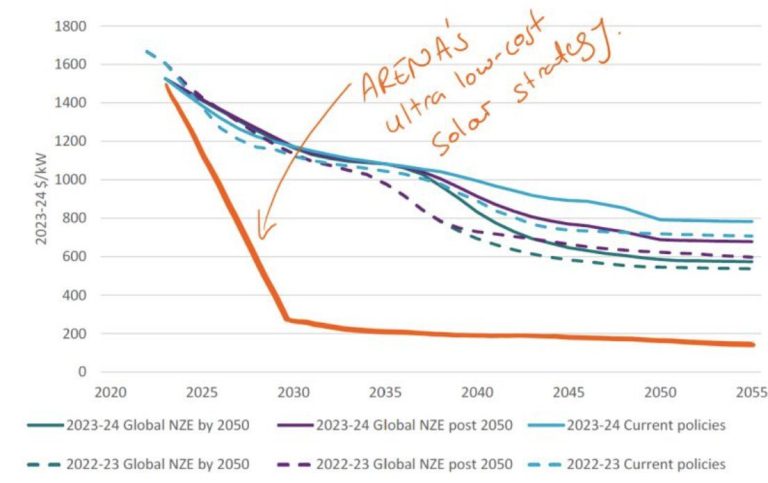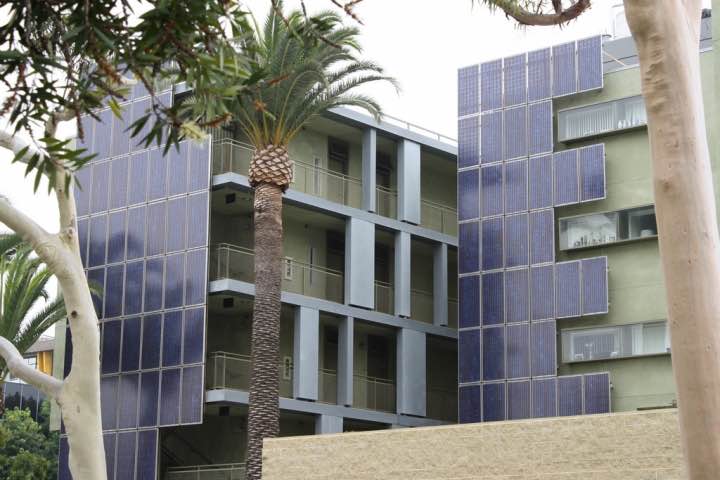HumeLink Welcomes Wind, Solar, and Battery Projects Amid Snowy 2.0 Constraints
The HumeLink transmission line, a significant component of the $4.9 billion Snowy 2.0 pumped hydro initiative and Australia’s Integrated System Plan, is now accepting applications for connections from new wind, solar, and battery projects.
This transmission line will link Wagga Wagga, where it will connect with the new Project EnergyConnect line from South Australia, to Bannaby, located just south of Sydney. A notable detour through the Snowy Mountains will enable the much-discussed Snowy 2.0 project to integrate with the broader electricity grid.
Boosting Renewable Energy Capacity
According to Transgrid, the company overseeing the project, the line will facilitate an additional 3,000 megawatts (MW) of renewable energy capacity into the grid. However, a significant portion of this capacity will be allocated to the Snowy 2.0 project, which is rated at 2,200 MW.
Given the high volume of projects that have received or are in the process of securing development approvals, including the Bookham, Bondo, and Yass Valley wind farms, it is anticipated that the number of applications will exceed the line’s capacity.
In addition to wind farms, several large battery projects are planned at both ends of the line and along its route, alongside various solar initiatives. These substantial battery installations may function as “virtual transmission,” acting as large shock absorbers to enhance the transport of megawatts simultaneously.
Project Status and Future Prospects
Transgrid has announced that the 500 kV transmission line can now proceed with connection applications following its designation as a “considered project,” which permits formal connection inquiries to be submitted.
Jason Krstanoski, acting head of network at Transgrid, remarked, “HumeLink represents a once-in-a-generation investment in Australia’s energy infrastructure, increasing the capacity for renewable energy to be delivered to the National Electricity Market and aiding the transition to a net-zero future.”
He added, “Once connected, this project will unlock the Snowy Hydro Scheme expansion, Snowy 2.0, which will contribute an additional 2,200 megawatts of on-demand energy to the grid. HumeLink will also facilitate the direct connection of more solar and wind generators, as well as battery and pumped-hydro energy storage facilities to the NSW transmission network, promoting a more reliable and sustainable national electricity grid.”
Cost and Construction Timeline
The HumeLink line, spanning 365 kilometres, was initially projected to cost around $1 billion, but this figure was later revised to $3.2 billion. The Australian Energy Market Operator has recently acknowledged that transmission costs have surged by at least 50%, prompting a reassessment of its overall transmission strategy. However, projects like HumeLink are deemed committed and will not be altered.
Similar to many other major transmission projects across the country, HumeLink has faced cost overruns and has been scrutinised regarding the validity of its claimed benefits, estimated to exceed $1 billion. Additionally, like other transmission lines, particularly those connecting to Victoria such as VNI West, HumeLink has encountered opposition from local landowners, resulting in several modifications and, in some cases, compulsory access.
Construction will involve new or upgraded infrastructure at four substation locations, with work set to commence in 2025 and expected to conclude by 2027.
Developers wishing to make a connection enquiry must pay a fee of $50,000, with an additional charge of $70,000 applicable if the estimated connection cost exceeds $10 million.
Krstanoski stated, “We are committed to enhancing support for our current and future customers, aiming to make the connection process as smooth as possible. This includes offering industry briefings and complimentary pre-connection engagements to assist proponents in their planning and expedite the process.”
